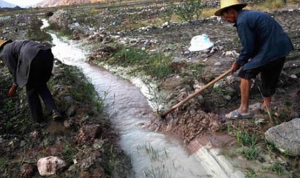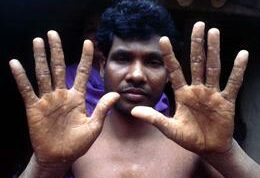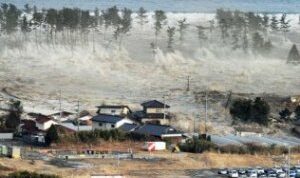 It has been called the largest mass poisoning in history.
It has been called the largest mass poisoning in history.
After wells were drilled in Bangladesh and the rest of the Indian subcontinent in the 1970s, millions of people have been exposed to arsenic in drinking water. When leached into water from surrounding rocks and soil, the metal can—at high concentrations—cause skin lesions, cancer, cardiovascular diseases, and neurodevelopmental delays. Now, a study suggests Pakistan might be grappling with its own arsenic emergency, with up to 60 million people exposed to contaminated water.
The extent of the problem first became clear in the 1990s, when a series of studies found high arsenic concentrations across the Ganges-Brahmaputra Delta. The World Health Organization (WHO) warned that 35 million to 77 million people in Bangladesh could be at risk of drinking water with unsafe levels of arsenic. And in 2014, WHO estimated that about 200 million people worldwide are exposed to concentrations exceeding the recommended limit of 10 micrograms per liter of water. Most live in Bangladesh, India, Vietnam, and Nepal.
Previous studies had revealed that groundwater in some areas of Pakistan also contained high levels of arsenic. But the extent of those risks was unknown, says Joel Podgorski, an environmental scientist at the Swiss Federal Institute of Aquatic Science and Technology in Dübendorf and lead author of the new study.
Podgorski’s team started by measuring arsenic levels in groundwater samples collected from about 1200 wells throughout Pakistan at depths of 3 to 70 meters. Nearly two-thirds exceeded the WHO-recommended threshold, and extremely high concentrations—above 200 micrograms per liter—were found along the Indus River valley. The higher concentrations tended to occur in areas with higher soil pH and near sand and clay younger than 10,000 years. Older sediments have been exposed to so much water over geological time that most of their arsenic has already washed out to sea. Under specific chemical conditions, the arsenic in younger sediments can dissolve in water and contaminate it, Podgorski says.
Next, the team created the region’s first risk map for arsenic, which shows the probability of dangerous concentrations in every part of the country. By estimating the number of people relying on groundwater for drinking, the team reports today in Science Advances that 50 million to 60 million people might use water that contains more than 50 micrograms per liter of arsenic, five times the WHO guideline.




